The magic of the FA cup was in the air once again as Newcastle travelled to Oxford in a quest to reach the fifth round of the tournament for the first time in 14 years. Oxford came into the game from a strong position in League 1 and confident of causing an upset following their hard-fought draw at St. James’ Park a few weeks ago.
The game was played at a high tempo, with both teams showing a passionate desire to win. In the end, it was the Magpies who prevailed in extra-time after nearly squandering an early two-goal lead.
In this tactical analysis, we look at the tactics used by Steve Bruce to exploit Oxford’s eagerness. We also provide an analysis of how Oxford altered their tactics to get back in the game.
Line-ups
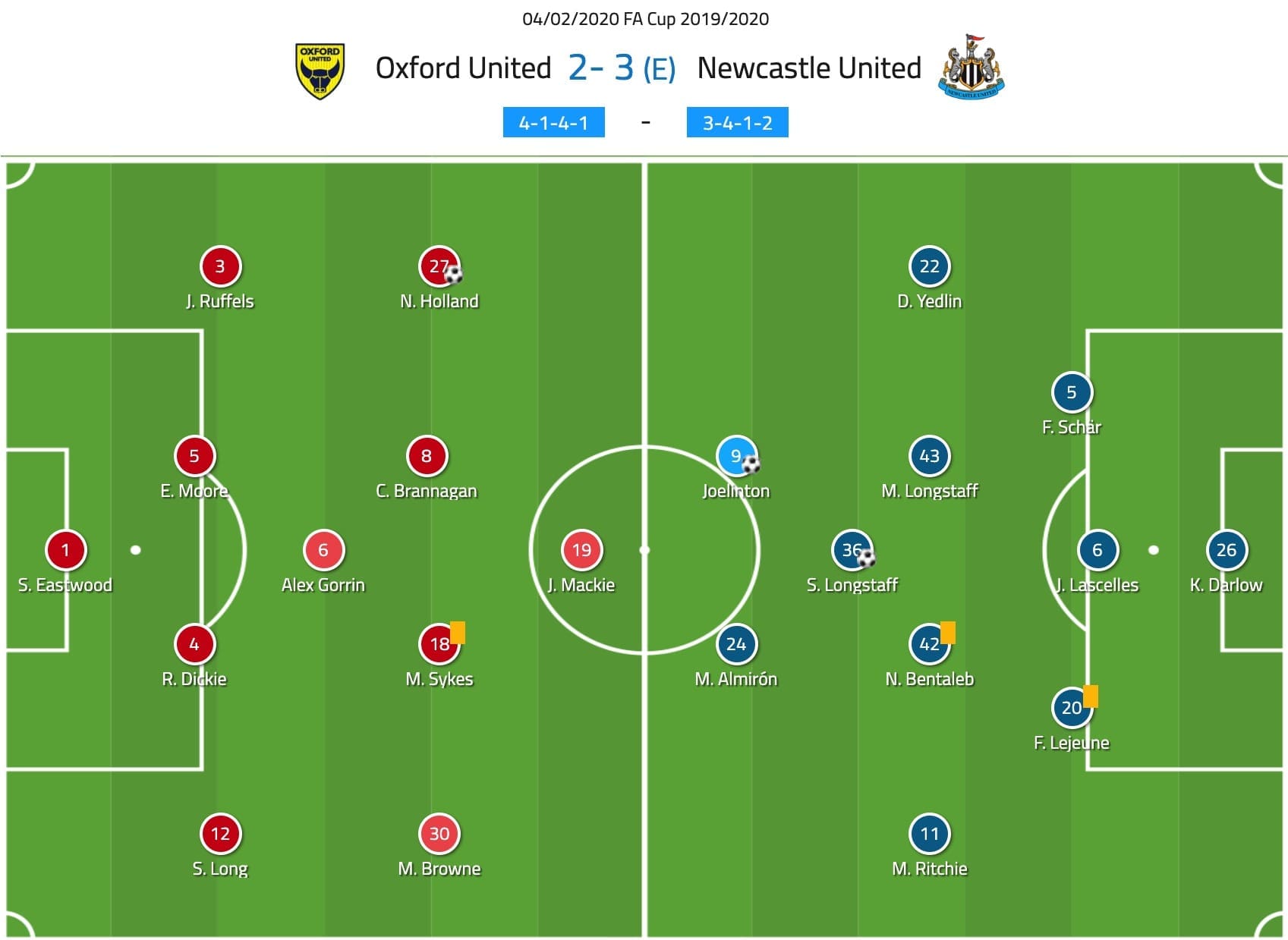
With so many players out of action, Bruce didn’t have the luxury of rotating his squad. Newcastle lined up in a familiar 5-3-2, which had an attacking variant. In what’s usually a robust three in central midfield, Bruce allowed Sean Longstaff to move into an attacking role, where he was used to linking transitions effectively. His brother, Matt Longstaff and ex-Spurs man, Nabil Bentaleb completed the midfield. Joelinton returned from injury to partner Miguel Almirón up front. The duo used their pace to attack a high Oxford defensive line.
The hosts started in a fluid 4-1-4-1/4-3-3 system. Mark Sykes, Alex Gorrin, and Cameron Brannagan made up the midfield trio. All three showed liberal movements forward to fill the opposition box in the attacking phases. Skipper Jamie Mackie led the line up front, supported by Nathan Holland and Marcus Browne who alternated between offering width and occupying half-spaces.
Oxford’s approach
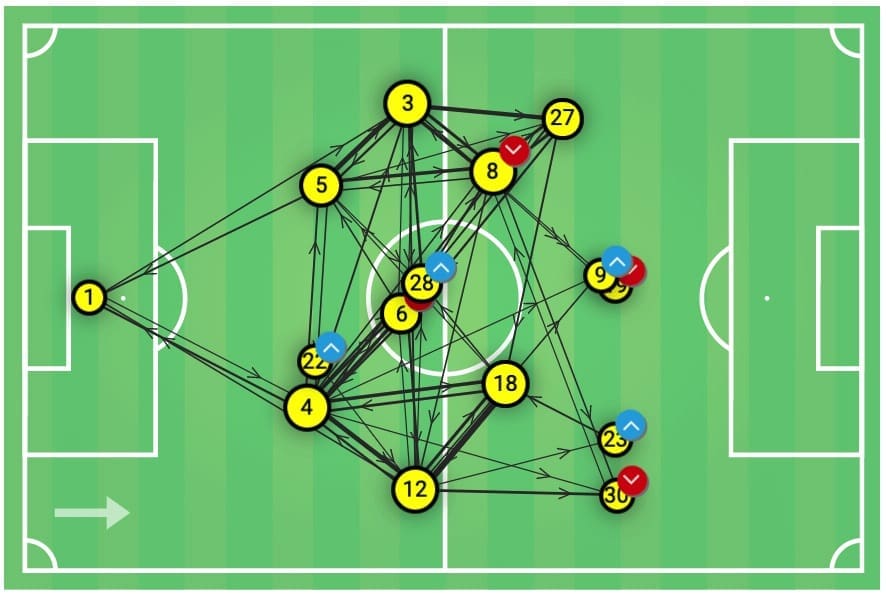
The tactical outlook of Oxford is best explained by starting with their defensive gameplan. Out of possession, the home side were aggressive in their attempts to regain possession higher up the field. To facilitate this, the defensive line marshalled by Elliot Moore (5) and Robert Dickie (4) was stationed high up the field. We can see from their average position above just how aggressive the defensive line was.
This tactic allowed Oxford to condense the space in Newcastle’s half during their early possession phases. In doing so, Oxford could commit six players to heavily congest these areas to reinforce the press. This eagerness and positivity led to good transition opportunities for the “U”s. However, high reward always comes with risk and occasionally when Newcastle escaped the press, they exposed the vulnerable high line – which we look at later.
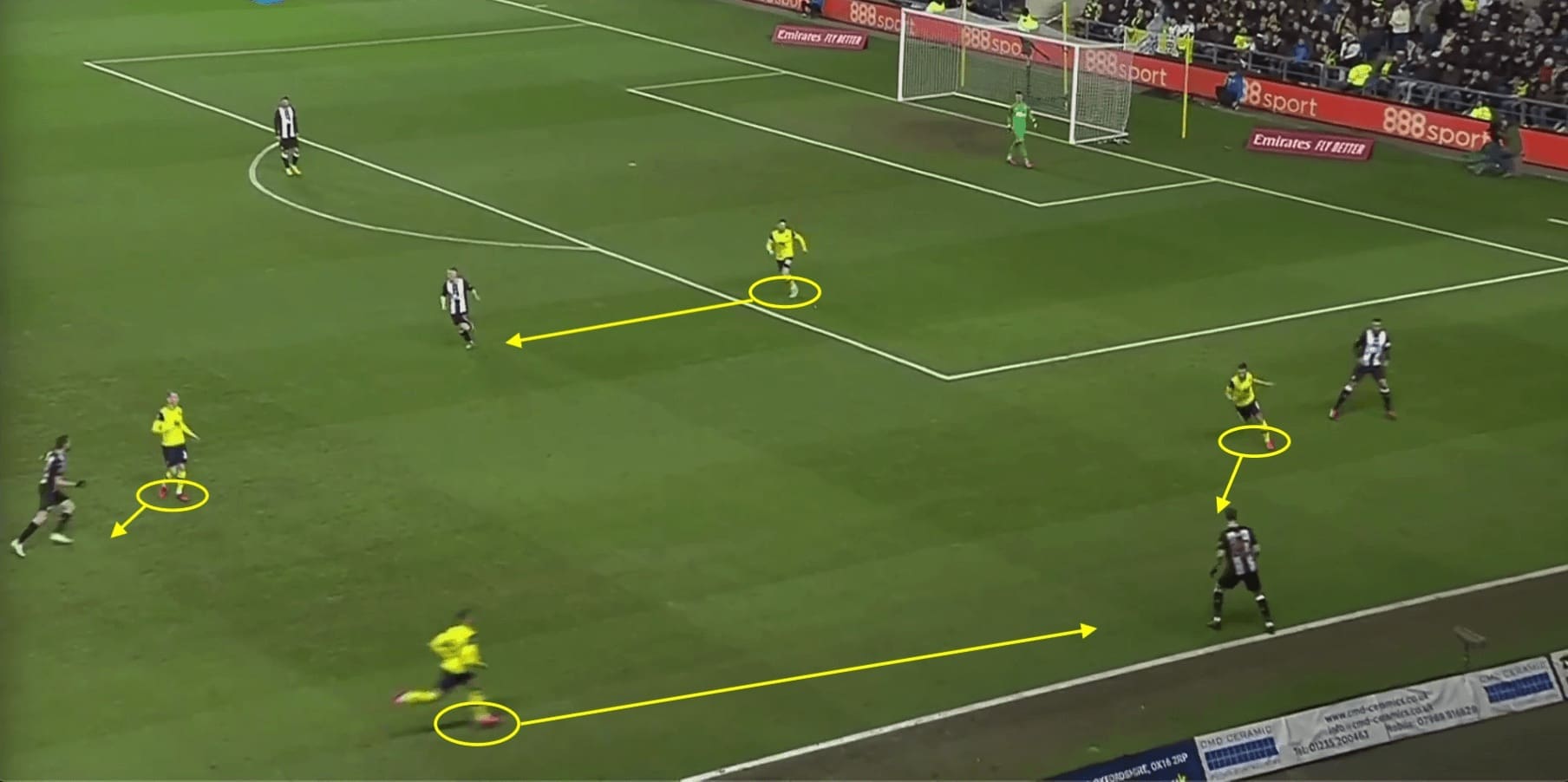
In their possession sequences, Oxford were positive. They looked to play vertical passes directly through the lines to advance into dangerous areas quickly. By having an average pass distance of 22.53 metres, Oxford reduced the risk of losing the ball in possession cycles in their defensive third and being exposed in defensive transition. This, however, led to frequent turnovers of possession as Oxford averaged just 3.71 passes per possession.
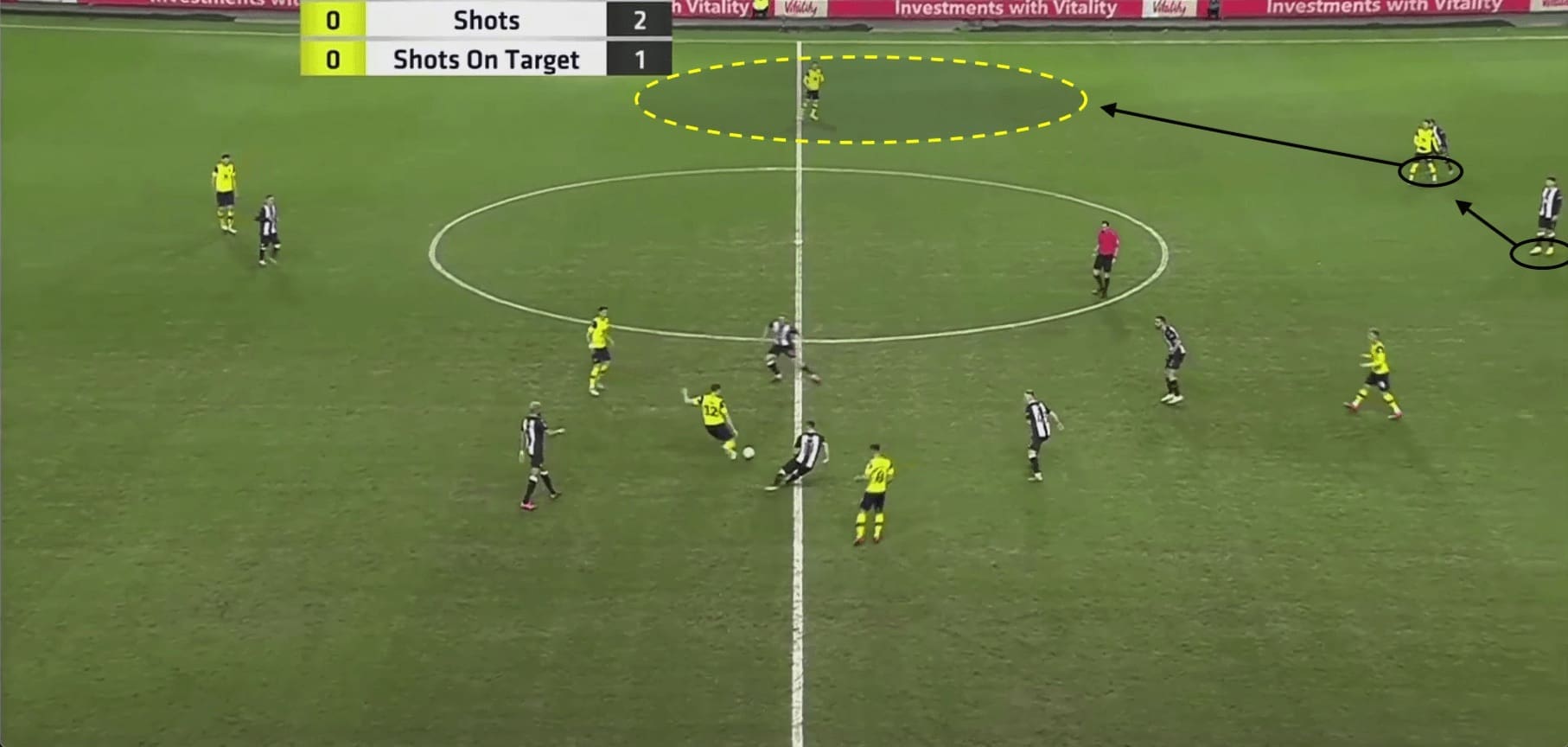
When Oxford did manage to sustain controlled possession, they used their full-backs to advance into positions where Newcastle were light. Because of the away side’s 5-3-2 shape, the advancing full-backs caused Newcastle a problem as they were occupied by the wingers of Oxford.
As a result, the full-backs were afforded time and space if Newcastle were unable to pass the wingers on to the outside centre-backs so the wing-backs could press. Gorrin’s position was key to this movement in the lateral spaces as he was required to lynchpin the full-backs movement by offering cover in defensive transition.
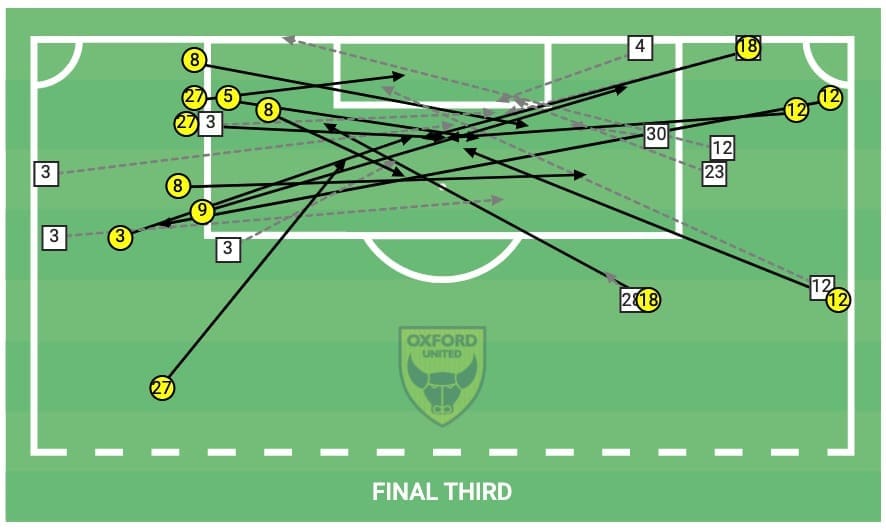
It was from these wide areas where Oxford could advance onto Newcastle’s deeper shape and successfully deliver crosses into the box. In the final third alone, the “U”s put in 25 crosses in total, which constantly troubled the Newcastle centre-backs. This tactic helped the League 1 side amass an impressive 1.62 xG against their Premier League opposition and eventually saw them claw their way back into the tie in the last gasps of the game.
Newcastle’s tactical story
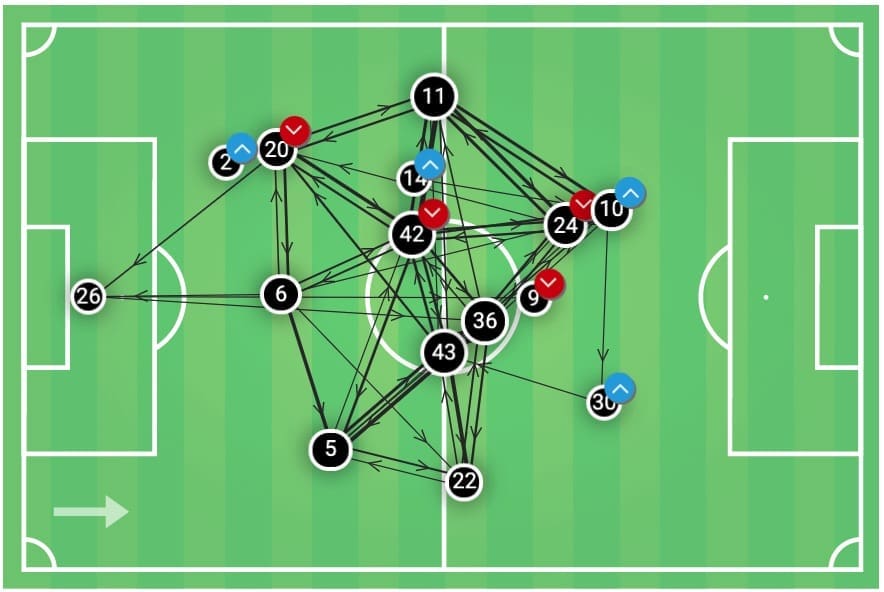
We can see from Newcastle’s pass map that they too didn’t prioritise long spells of possession in this match. The thin lines indicate the number of interchanges between each player, which as we can see, meant there was no fluidity to Newcastle’s attacking movements.
Instead, when out of possession Newcastle quickly set themselves in a solid 5-3-2 shape that operated a deeper defensive line. This closed off spaces in behind for Oxford to penetrate and also invited the Oxford line further up the pitch which they exploited in transition.
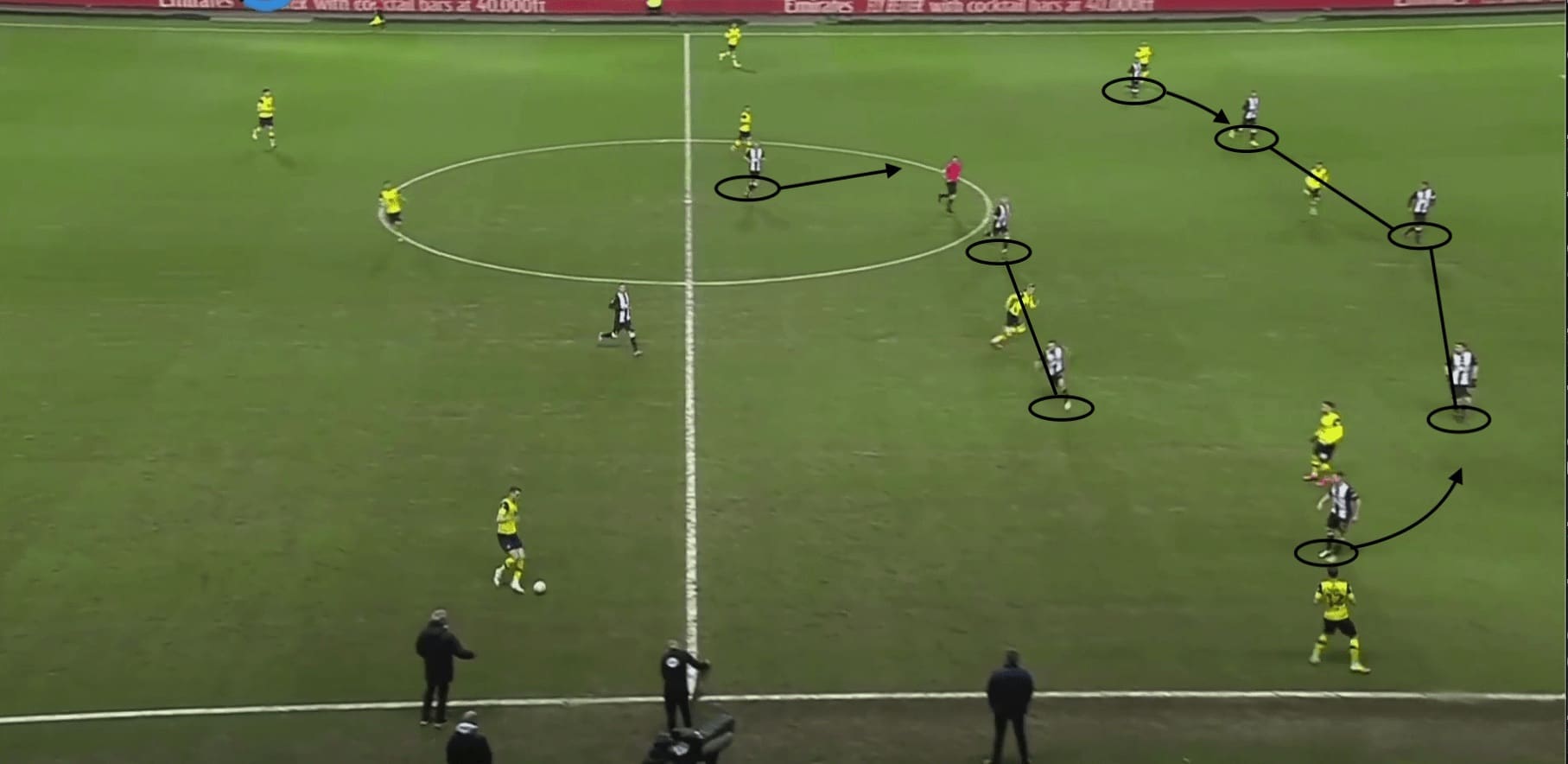
Matt Ritchie and DeAndre Yedlin dropped into the defensive line alongside the three centre-backs. This helped prevent overloads on the wings where the Oxford full-backs were advancing. Sean Longstaff also dropped back into the midfield to make a rigid flat three-man midfield, which made it difficult for Oxford to pass through. Above we can see the rigid structure Newcastle quickly dropped into when they lost possession.
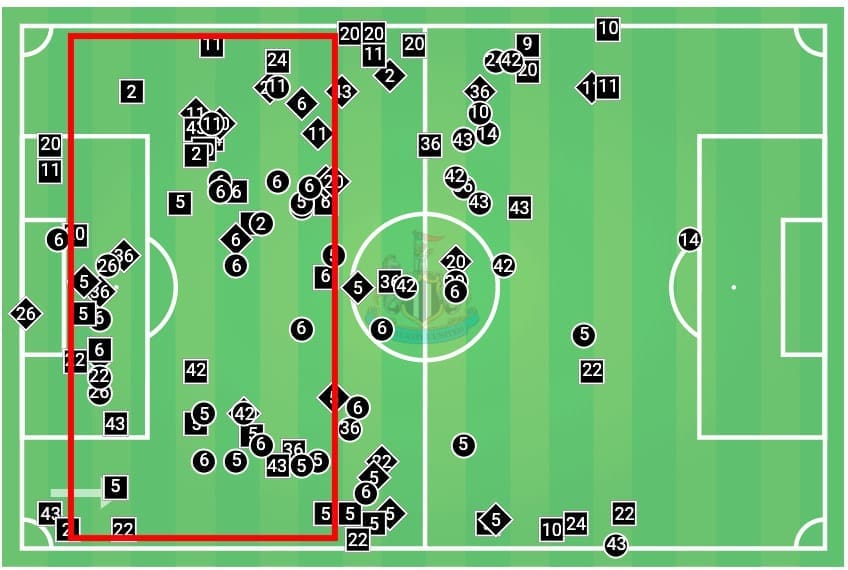
This shape resulted in the majority of their recoveries occurring in the defensive third. We can see highlighted above Newcastle’s aversion to an aggressive man-to-man press, and they instead relied on a low block to stifle their opponents and create space for themselves in transition.
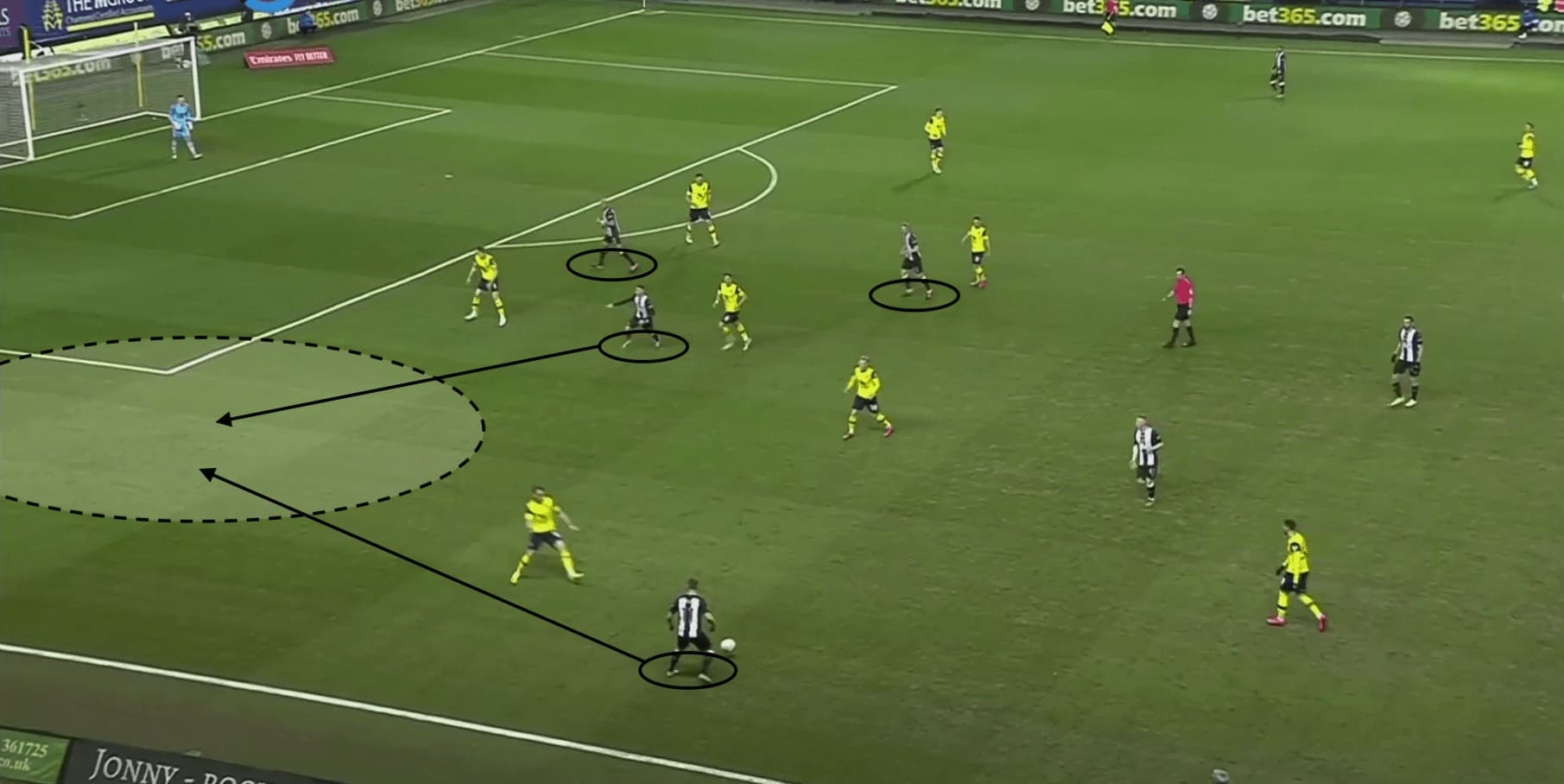
In possession, Newcastle had two effective tactics that penetrated Oxford consistently. When the Oxford full-backs had advanced in attack, they left spaces in behind that could be exploited with channel runs. Above we see Newcastle haven’t committed many players to the attack, however, there is space in the channel to penetrate. A clever run from Almirón in behind the out-of-position full-back disorganises Oxford’s defensive system. The centre-back is pulled out to close down the run, which opens space for Newcastle players in the penalty area.
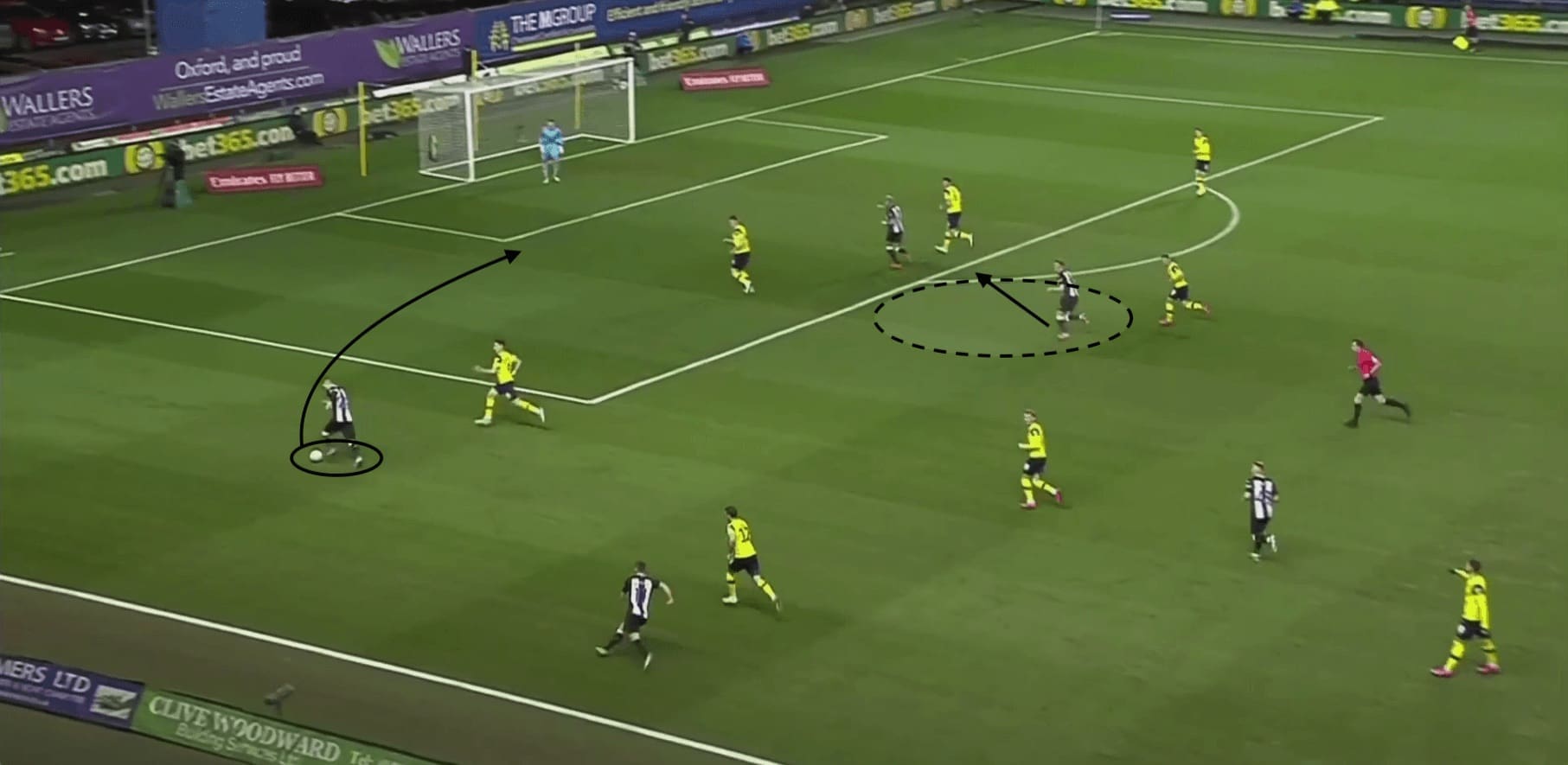
This attacking analysis helps understand the positioning of Longstaff who was deployed to fill the box when the channel run was made by either striker. We can see above the space he picks up by making the late run after the centre-backs have been shifted out wide. Eventually, the pressure took its toll and Longstaff punished the space he was afforded by rifling a shot into the net.
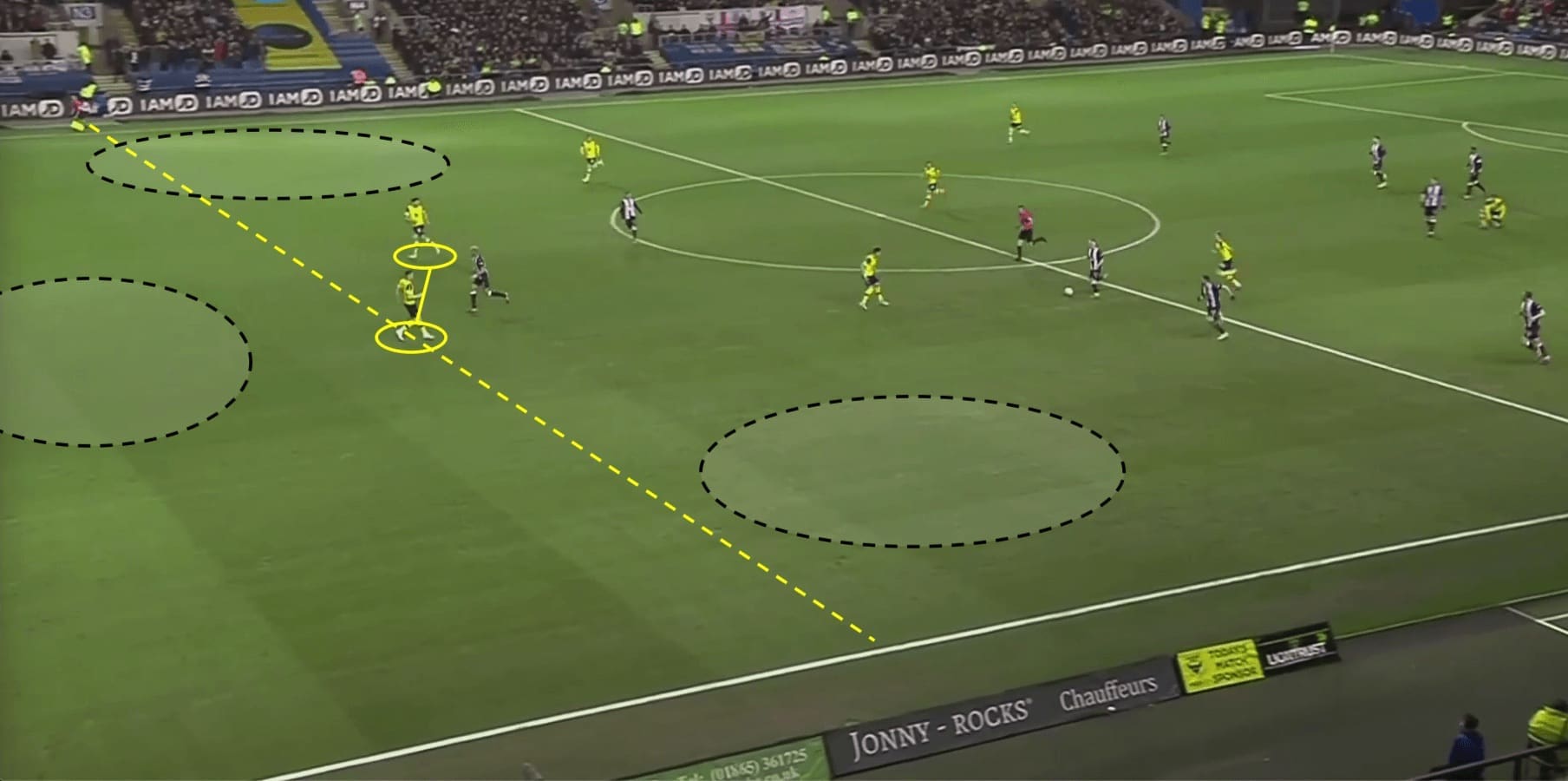
The second successful tactic stemmed from Newcastle’s robust low-block. Upon recovering the ball in the deeper areas, as shown earlier, Newcastle looked to transition quickly. This was in direct conflict with Oxford’s desire to press and so held a high line, as we can see above.
On the occasions where the press was bypassed, major gaps appeared in the Oxford shape as up to six players were the wrong side of the ball. From this position, the pace of Almirón and Joelinton punished the slow defensive line with runs into the pockets of space, pulling Oxford further apart and creating goalscoring opportunities.
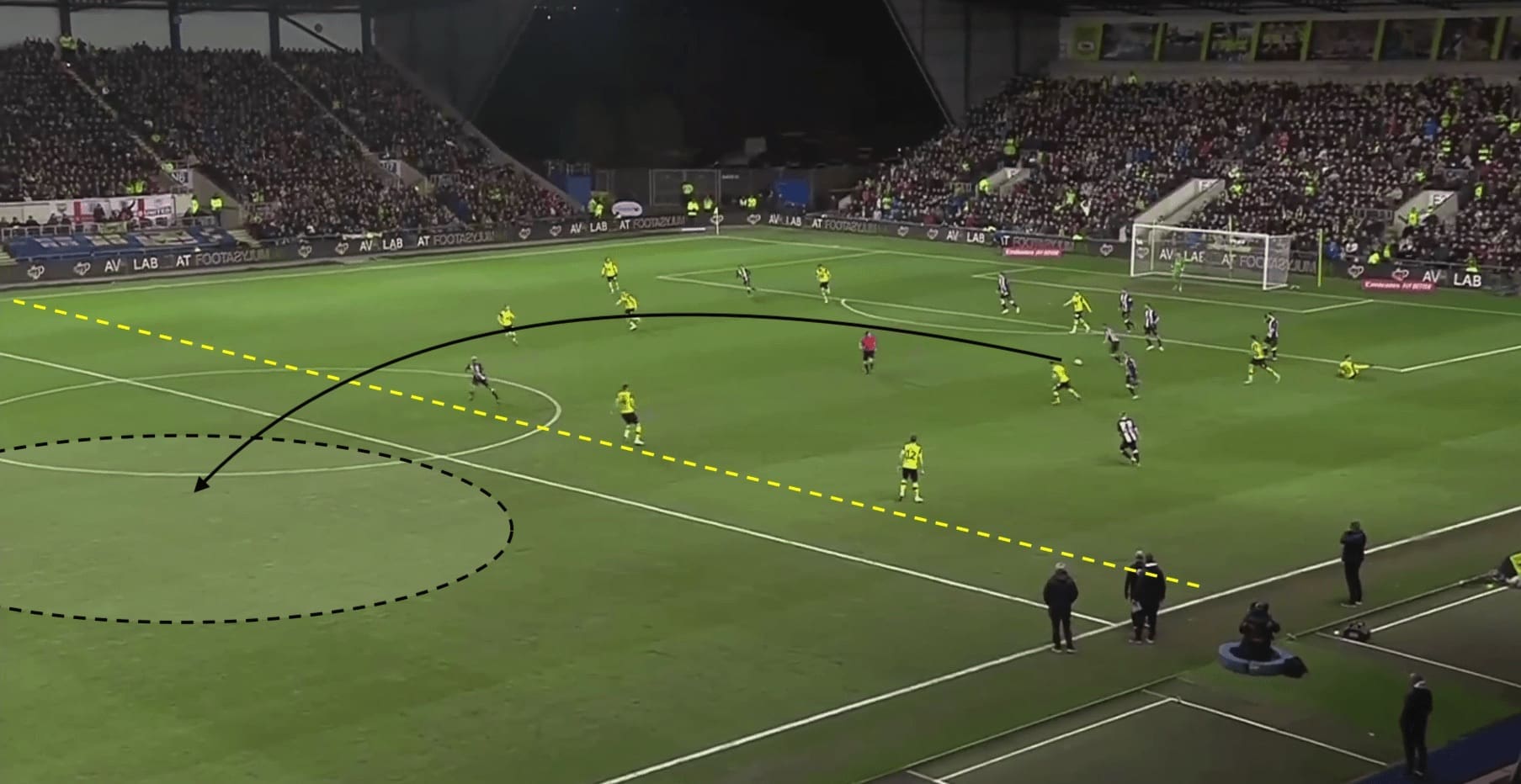
This eventually led to Newcastle’s second goal. The ball was turned over deep in Newcastle’s defensive third, where within seconds it was transitioned into a penetrative attack. One long ball over the extremely aggressive defensive line of Oxford allowed Joelinton to go clear and one-on-one with the goalkeeper. He coolly finished it off in what looked like a routine victory for the visitors. However, as shown above, Oxford had different ideas.
Final Thoughts
The bus home will be a happy one for Bruce and his men as they will be delighted to break an astonishing/embarrassing 14-year record. With an ever-growing injury list and the constant undertones of a takeover circling around the club, a welcome Cup run will keep the Geordies on side for a little while longer.
It was a valiant attempt from Karl Robinson and his side who despite facing early disappointment – and the chance of an embarrassing evening – stuck to their aggressive tactics that nearly took them to penalties. Had it not been for a special bit of quality which was the difference on the night, Oxford can consider themselves unlucky not to see their name in the FA Cup fifth round draw.




Comments